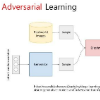At the core of insurance business lies classification between risky and non-risky insureds, actuarial fairness meaning that risky insureds should contribute more and pay a higher premium than non-risky or less-risky ones. Actuaries, therefore, use econometric or machine learning techniques to classify, but the distinction between a fair actuarial classification and "discrimination" is subtle. For this reason, there is a growing interest about fairness and discrimination in the actuarial community Lindholm, Richman, Tsanakas, and Wuthrich (2022). Presumably, non-sensitive characteristics can serve as substitutes or proxies for protected attributes. For example, the color and model of a car, combined with the driver's occupation, may lead to an undesirable gender bias in the prediction of car insurance prices. Surprisingly, we will show that debiasing the predictor alone may be insufficient to maintain adequate accuracy (1). Indeed, the traditional pricing model is currently built in a two-stage structure that considers many potentially biased components such as car or geographic risks. We will show that this traditional structure has significant limitations in achieving fairness. For this reason, we have developed a novel pricing model approach. Recently some approaches have Blier-Wong, Cossette, Lamontagne, and Marceau (2021); Wuthrich and Merz (2021) shown the value of autoencoders in pricing. In this paper, we will show that (2) this can be generalized to multiple pricing factors (geographic, car type), (3) it perfectly adapted for a fairness context (since it allows to debias the set of pricing components): We extend this main idea to a general framework in which a single whole pricing model is trained by generating the geographic and car pricing components needed to predict the pure premium while mitigating the unwanted bias according to the desired metric.
翻译:保险业务的核心是风险保险和无风险保险之间的分类,精算公平意味着风险保险的投保人应比非风险或低风险保险人贡献更多并支付更高的溢价。因此,精算师采用计量经济学或机器学习技术进行分类,但公平的精算分类和“歧视”之间的区分很微妙。因此,精算界林德霍尔姆、里奇曼、察纳卡斯和武特里希(2022年)对公平和歧视的兴趣日益浓厚。 假定,不敏感的特点可以替代或替代受保护的属性。例如,汽车的颜色和模型,加上司机的占有,可能导致在预测汽车保险价格时出现不可取的性别偏差。令人惊讶的是,我们将显示仅仅对预测值的偏差可能不足以保持适当的准确性(1)。 事实上,传统定价模式目前建在两阶段结构中,考虑到许多潜在的偏差成分,如汽车或地理风险。 我们将表明,这种传统结构在实现公平方面存在着很大的局限性。为此,我们制定了一个更公平的理念背景,我们制定了一个新的价格模型,而这个模型的深度定价模式,而这个模型又能显示, 21公司的整个价格的深度定价法则显示,一个更精确的深度的深度成本方法。




